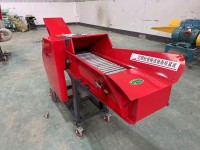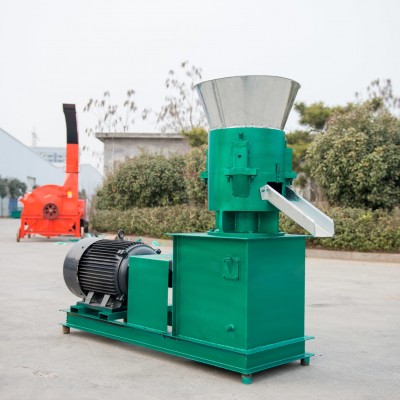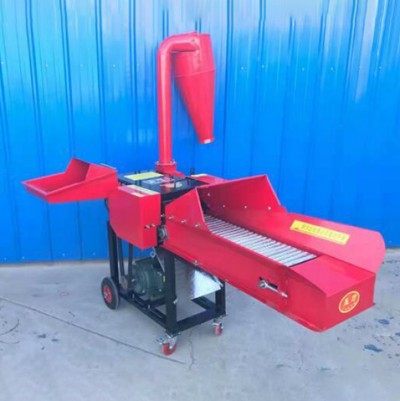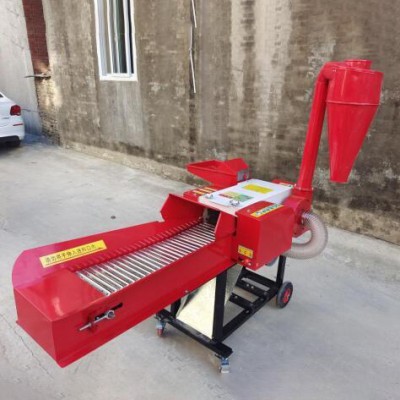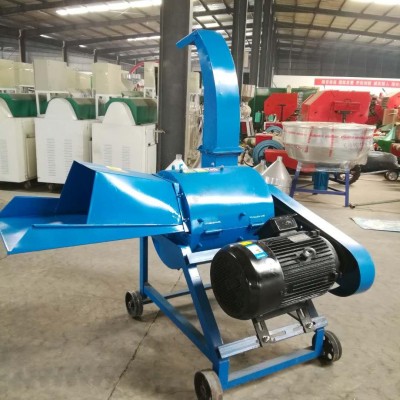
Dry Environment
• Cleaning work: Although dust is relatively easy to fly in a dry environment, there is no corrosion risk like in a wet environment. However, it is still necessary to clean the machine regularly. After each use, use a clean soft cloth or brush to sweep away the forage residues on the surface and inside the machine to prevent the accumulation of residues from affecting the machine's performance.
• Lubrication maintenance: Carry out lubrication according to the normal cycle. Due to the dry environment, the lubricant may volatilize a bit faster, so the lubrication cycle can be appropriately shortened. For example, for components that are originally required to be lubricated once every three months, it can be adjusted to be lubricated once every two and a half months. Choose high-quality lubricants that are not easy to dry up, and focus on lubricating the moving joints of the cutting blades, the gears and bearings of the gearbox, and other parts.
• Inspection of components: Regularly check the wear of components such as the belts and cutting blades of the machine. In a dry environment, the belts may become brittle due to dryness, so pay attention to whether there are cracks; the cutting blades may also adsorb dust due to static electricity generated by friction, accelerating wear, and if there is wear, they should be replaced in a timely manner.
Wet Environment
• Moisture-proof measures: If the working environment is relatively wet, such as during the plum rain season in the south or in places close to water sources, the machine should be placed in a dry and ventilated room when not in use. You can place a base plate under the machine to avoid direct contact with the wet ground. If there is no indoor storage condition, cover the machine with a waterproof tarpaulin to prevent it from getting wet by rain.
• Cleaning and rust prevention: After each use, not only should the forage residues be cleaned up, but also check whether there is moisture condensation on the surface of the machine. If there is, wipe it clean with a dry cloth. For the metal parts of the machine, such as the cutting blades and the gearbox housing, apply anti-rust oil regularly (for example, once a month) to prevent rusting. If slight rust is found, it should be polished with sandpaper in a timely manner and then re-applied with anti-rust oil.
• Inspection of the electrical system: The wet environment is prone to cause failures in the electrical system, such as short circuits and electric leakage. Regularly check whether the wires are damaged and whether the plugs are loose. If the outer sheath of the wire is found to be damaged, it should be wrapped with insulating tape in a timely manner; for electrical components such as motors that have got wet, they can only be reused after being dried.
Environment with a Lot of Dust
• Protective measures: Simple filters can be installed at places where dust is likely to enter the machine, such as the air inlets and the feeding inlets, to reduce the amount of dust entering the machine interior. The filters should be cleaned or replaced regularly to ensure their filtering effect.
• Cleaning frequency: Increase the frequency of cleaning. Clean the dust inside and outside the machine after each day's use. Compressed air cans or small vacuum cleaners can be used to clean the dust that is difficult to sweep inside the machine. In particular, pay attention to cleaning the parts such as the heat sinks of the gearbox and the motor to prevent dust from clogging and affecting heat dissipation.
• Component maintenance: For the transmission components of the machine, such as belts and chains, dust will accelerate their wear. Regularly check their tension and wear conditions, and if necessary, replace them in a timely manner. Meanwhile, dust will also affect the cutting effect of the cutting blades. Besides cleaning the dust on the surface of the cutting blades, also check whether there are tiny damages on the cutting edges caused by friction with dust particles.
Cold Environment
• Preheating measures: Before starting the machine in a cold environment, it is best to carry out preheating. You can let the motor idle for a few minutes first to make the lubricating oil inside the machine and each component reach a certain working temperature, reducing the friction during startup and the possibility of component damage.
• Oil selection: Choose lubricating oil, hydraulic oil, etc. that are suitable for low-temperature environments. For example, use gear oil with a lower viscosity in winter to ensure that components such as the gearbox can also be well lubricated at low temperatures. Meanwhile, pay attention to the storage environment of the oil to avoid the oil from freezing.
• Material maintenance: In a cold environment, some plastic or rubber parts may become brittle. Check whether components such as the sealing rubber rings and plastic housings on the machine are cracked. If any damage is found, replace them in a timely manner to prevent dust, moisture, etc. from entering the machine interior.
View document


 English
English 日本
日本 한국인
한국인 Français
Français Deutsch
Deutsch español
español Italiano
Italiano Portugal
Portugal Việt Nam
Việt Nam türkiye
türkiye عرب
عرب Русский
Русский čeština
čeština แบบไทย
แบบไทย Eesti
Eesti Gaeilge
Gaeilge Hmoob
Hmoob íslenskur
íslenskur Cymraeg
Cymraeg български
български اردو
اردو Polski
Polski Hrvatski
Hrvatski українська
українська bosanski
bosanski فارسی
فارسی lietuvių
lietuvių latviski
latviski עִברִית
עִברִית Română
Română Ελληνικά
Ελληνικά dansk
dansk Magyar
Magyar norsk
norsk Suomalainen
Suomalainen Nederlands
Nederlands svenska
svenska slovenský
slovenský Slovenščina
Slovenščina हिंदी
हिंदी Indonesia
Indonesia Melayu
Melayu Malti
Malti Kreyòl ayisyen
Kreyòl ayisyen català
català বাংলা
বাংলা Српски
Српски o'zbek
o'zbek


